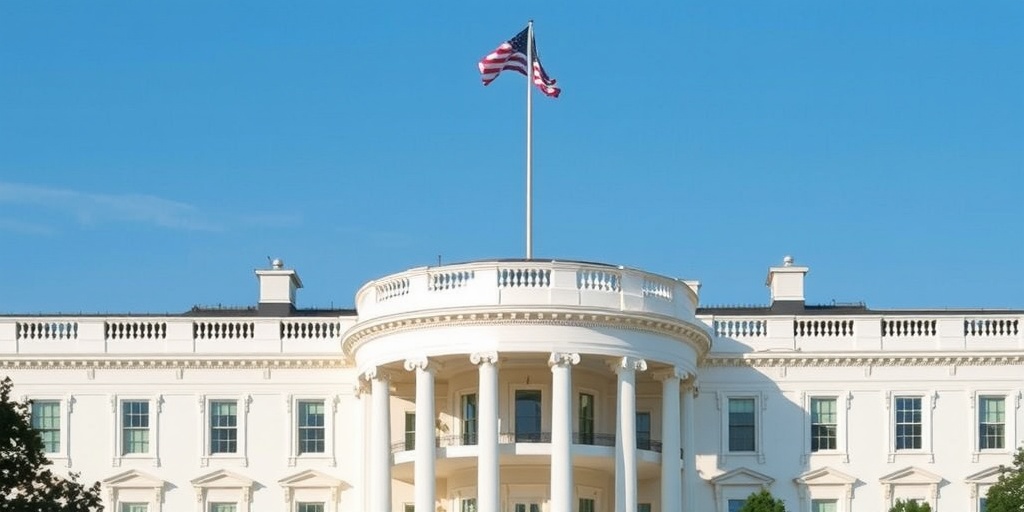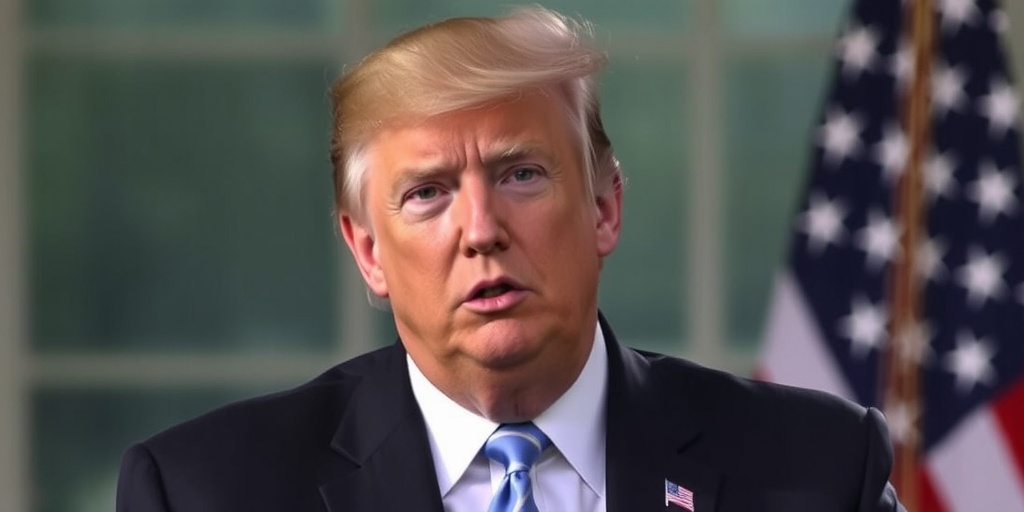Now Reading: Trump’s Layoff Plan Includes Office Closures and Relocations
-
01
Trump’s Layoff Plan Includes Office Closures and Relocations
Trump’s Layoff Plan Includes Office Closures and Relocations

Title: Trump Administration Pushes for Massive Cuts in Federal Workforce Amid Growing Concerns
The Trump administration has embarked on a significant and aggressive initiative aimed at reshaping the federal bureaucracy, setting in motion plans for extensive workforce reductions. Each agency has been instructed to formulate strategies that not only involve substantial job cuts but also contemplate closing various offices and relocating government employees away from the Washington, D.C. area.
According to a recent memo from the Office of Personnel Management (OPM) and the Office of Management and Budget (OMB), federal agencies are required to submit detailed plans outlining divisions slated for consolidation or elimination by March 13. This directive is part of President Trump’s broader “reduction in force” strategy, which he is implementing with considerable input from Elon Musk, the billionaire entrepreneur now serving as a key advisor.
By April 14, agencies must present updated organizational charts and proposals for relocating offices in the Washington region to lower-cost areas across the United States. They have been tasked with preparing to implement these changes by the end of September, a timeline experts deem ambitious, if not impossible, given the legal complexities involved.
“No agency can genuinely produce a strategic plan within the next two weeks,” stated Donald F. Kettl, professor emeritus and former dean at the University of Maryland’s School of Public Policy. “They need to fully understand their objectives and devise a coherent approach before indiscriminately slashing jobs.”
As the administration implements these cuts, it must adhere to specific regulations governing such reductions. For instance, federal employees are typically entitled to a 60-day notice before being laid off, although recent guidance from the White House allows agencies to request an exemption for only 30 days’ notice. Furthermore, departments initiating workforce reductions are required to create a Reduction in Force (RIF) registry, ranking employees based on service duration, performance ratings, and veteran status. The aim is to retain the most qualified individuals when downsizing roles.
In an executive order issued earlier this month, Trump outlined the expedited timeline for downsizing the federal workforce, which has already seen thousands of federal employees terminated—many of whom held probationary positions or roles that were previously designated for diversity, equity, and inclusion efforts that the current administration has dismantled.
No previous administration has attempted such large-scale reductions in federal employment within such a tight timeline. Since taking office, federal workers have faced an atmosphere rife with uncertainty, confusion, and anxiety—conditions exacerbated by the latest memo, which has heightened apprehensions ahead of every incoming email.
One nurse at a Veterans Affairs hospital described the pervasive uncertainty among her colleagues, expressing concerns about their job security. “We’re in a constant state of anxiety, wondering if we should start searching for new jobs, while our supervisors lack answers,” she shared, emphasizing the anxiety that patients are also experiencing regarding potential hospital closures.
Another federal employee, a mother and the primary provider for her family, expressed worries about the future of her job and its implications for her health insurance. She articulated that the administration’s strategy seems designed to inflict fear and trauma upon workers.
“I find this entire situation so absurd that it’s almost comedic,” remarked Alma Aliaj, a former employee of the U.S. Agency for International Development, who recently faced being fired not once, but twice. She recounted receiving conflicting messages about her employment status—first being deemed essential, only to later be told she would be laid off due to her probationary status.
The chaos and lack of coherent planning surrounding these actions have been sharply criticized by various stakeholders. Ahead of the latest guidance for workforce reductions, some agencies had already begun informing employees about forthcoming cuts, while others appeared to be aligning their strategies with the administration’s directives, such as evaluating office closures and lease terminations.
Kash Patel, the new director of the FBI, has announced plans to relocate 1,000 agents from the Washington area to other regions, along with 500 support staff to an FBI campus in Huntsville, Alabama. Labor unions representing federal employees have vocally opposed many of these initiatives, asserting that the administration is not following the legal guidelines for implementing reductions in force.
Recently, officials at the Department of Housing and Urban Development notified employees about impending cuts affecting 144 positions in the Office of Field Policy and Management, which serves as the primary liaison for local communities. Union representatives claim that HUD has failed to comply with nearly all the necessary contractual or statutory requirements in executing these reductions.
For President Trump, the downsizing of the federal workforce appears to be progressing successfully. “We have cut billions and billions of dollars,” he claimed during a recent cabinet meeting, indicating a goal to diminish costs potentially to a trillion dollars. However, he did not provide supporting data for his assertions of substantial savings. Reports indicate that the operations instituted by Musk’s newly formed Department of Government Efficiency lack transparency and are fraught with errors in their accounting, with significant programs—such as funding for Ebola containment—faced with termination due to rapid contract cancels, a miscalculation that Musk subsequently acknowledged.
As federal employees grapple with the implications of these drastic changes, the apprehension surrounding the administration’s ambitious plans continues to grow, leaving many questioning their futures in government service.
Stay Informed With the Latest & Most Important News
Previous Post
Next Post
-
 01New technology breakthrough has everyone talking right now
01New technology breakthrough has everyone talking right now -
 02Unbelievable life hack everyone needs to try today
02Unbelievable life hack everyone needs to try today -
 03Fascinating discovery found buried deep beneath the ocean
03Fascinating discovery found buried deep beneath the ocean -
 04Man invents genius device that solves everyday problems
04Man invents genius device that solves everyday problems -
 05Shocking discovery that changes what we know forever
05Shocking discovery that changes what we know forever -
 06Internet goes wild over celebrity’s unexpected fashion choice
06Internet goes wild over celebrity’s unexpected fashion choice -
 07Rare animal sighting stuns scientists and wildlife lovers
07Rare animal sighting stuns scientists and wildlife lovers




















